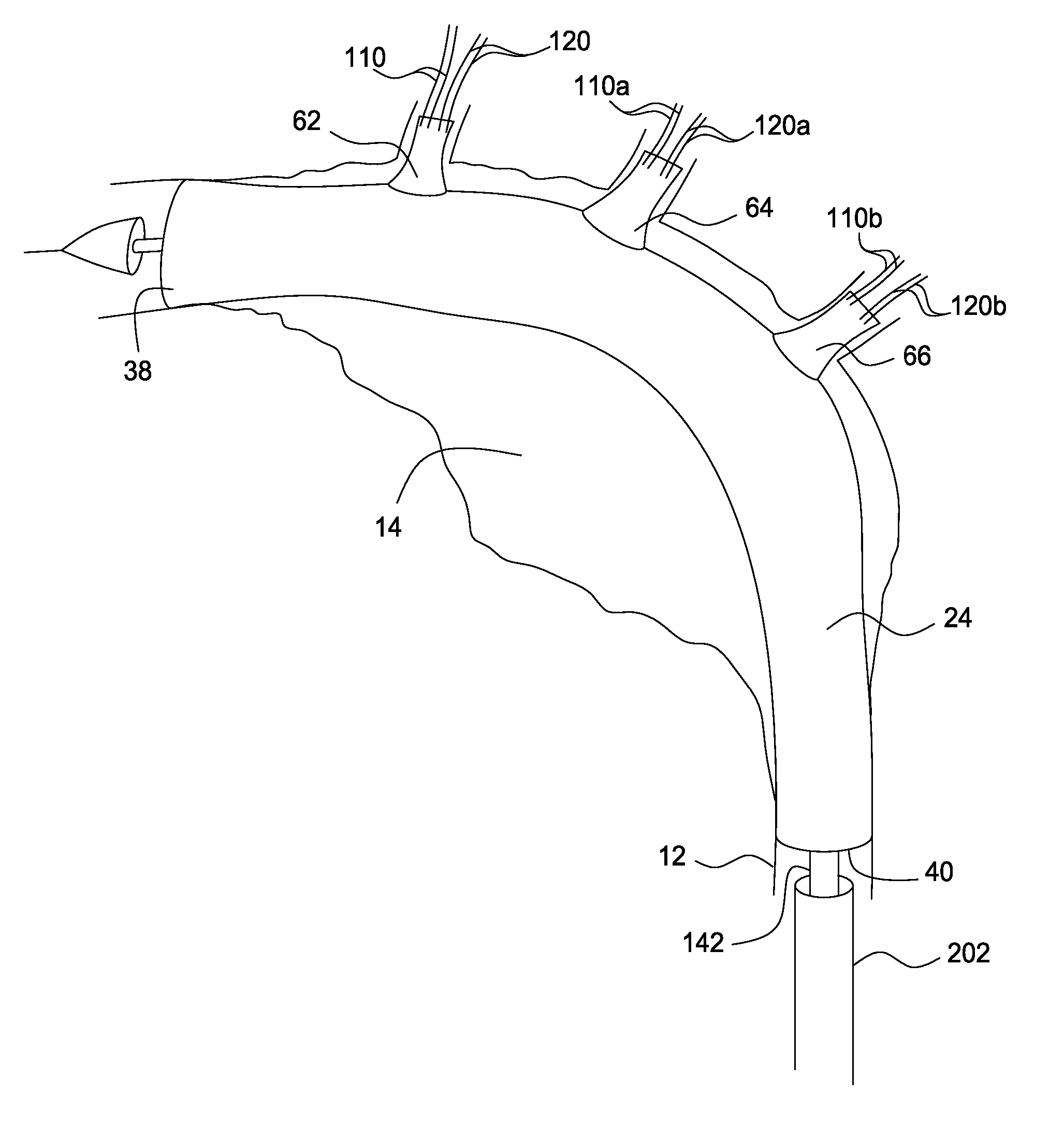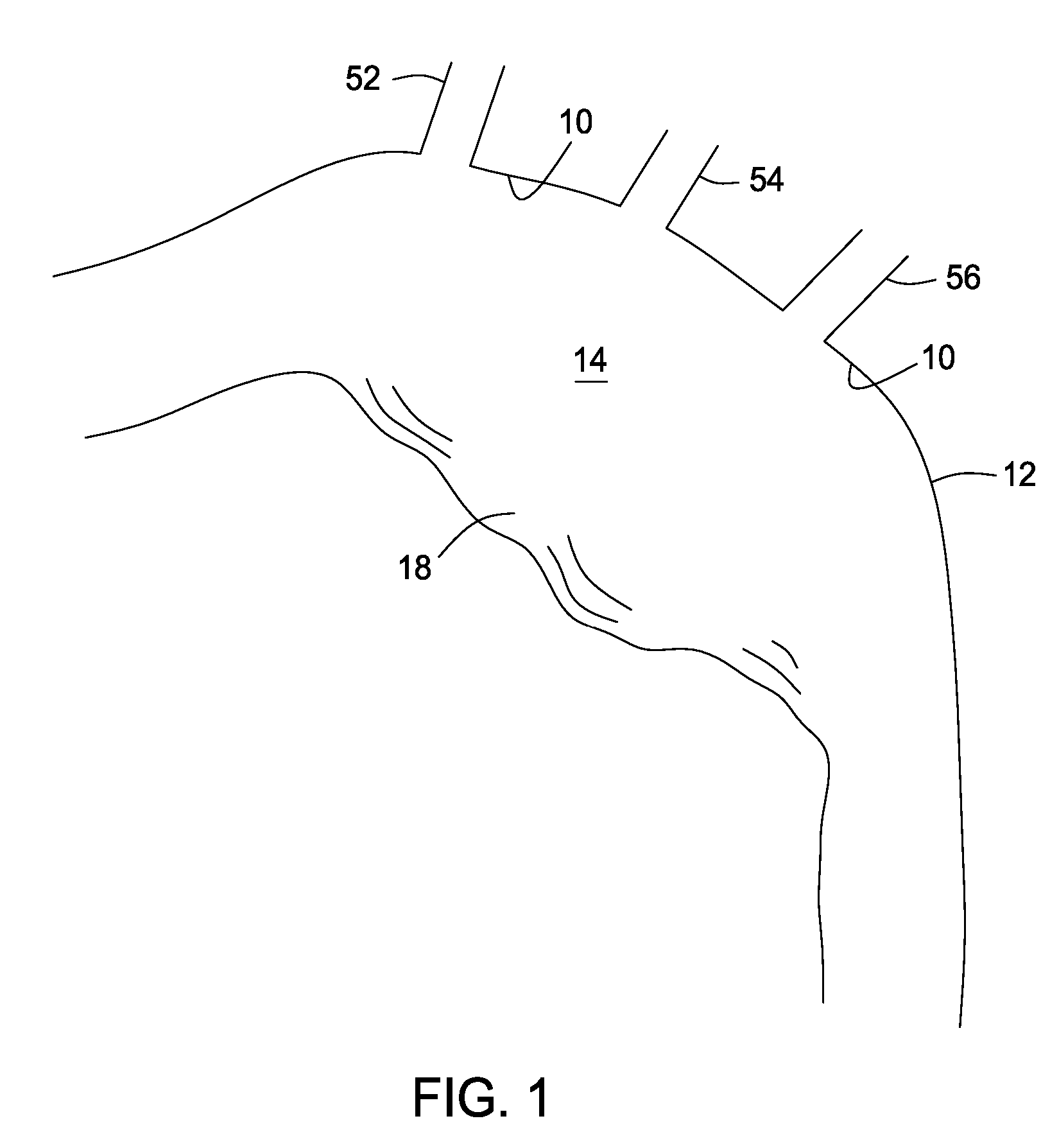Methods and Apparatus for Treatment of Aneurysms Adjacent to Branch Arteries
a branch artery and aneurysm technology, applied in the field of vascular abnormalities, can solve the problems of aortic tearing or rupture, and limiting the ability to exclude aneurysms, so as to prevent blood flow to the aneurysmal site
- Summary
- Abstract
- Description
- Claims
- Application Information
AI Technical Summary
Benefits of technology
Problems solved by technology
Method used
Image
Examples
Embodiment Construction
[0036] Reference now will be made to details of exemplary embodiments according to the invention. While the invention will be described in conjunction with these embodiments, it is to be understood that the described embodiments are not intended to limit the invention solely and specifically to only these embodiments.
[0037] Methods and apparatus for stabilizing and treating an aneurysm include deploying an exclusion device, such as a stent graft, in the aneurysmal flow lumen to span the aneurysmal location therein and to seal the aneurysmal location off from further blood flow thereto. In the case of a thoracic aneurysm of the aortic arch, methods and apparatus for the treatment thereof include positioning an endovascular stent graft in the aneurysmal site in the aortic arch, wherein the stent graft includes at least one, and in the embodiment described herein, three, apertures therein, and at least one of these apertures includes an branch vessel flow element therein for sealing e...
PUM
 Login to View More
Login to View More Abstract
Description
Claims
Application Information
 Login to View More
Login to View More - R&D
- Intellectual Property
- Life Sciences
- Materials
- Tech Scout
- Unparalleled Data Quality
- Higher Quality Content
- 60% Fewer Hallucinations
Browse by: Latest US Patents, China's latest patents, Technical Efficacy Thesaurus, Application Domain, Technology Topic, Popular Technical Reports.
© 2025 PatSnap. All rights reserved.Legal|Privacy policy|Modern Slavery Act Transparency Statement|Sitemap|About US| Contact US: help@patsnap.com



